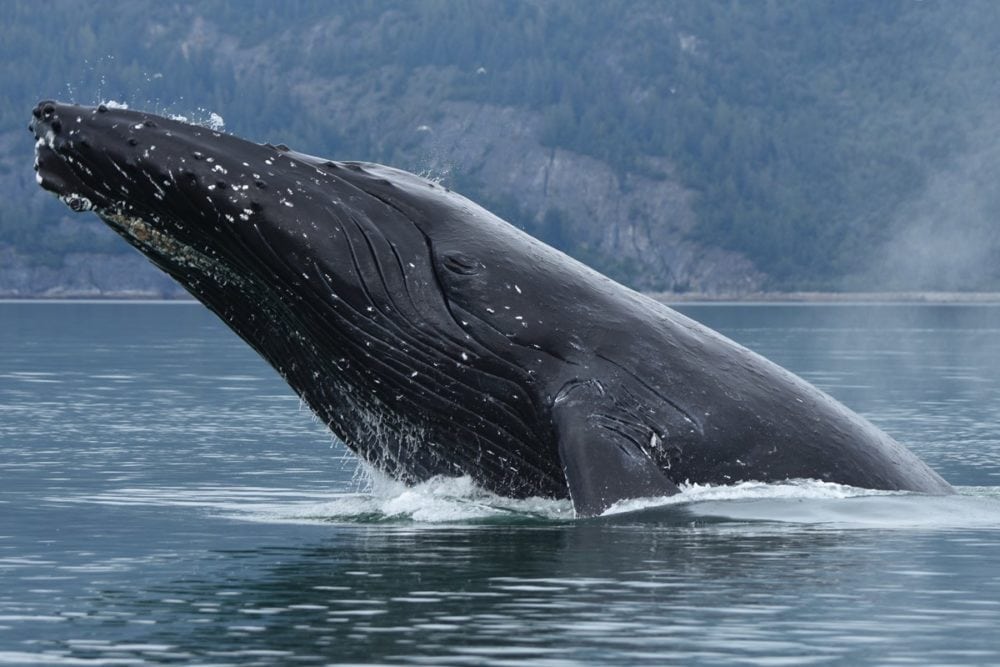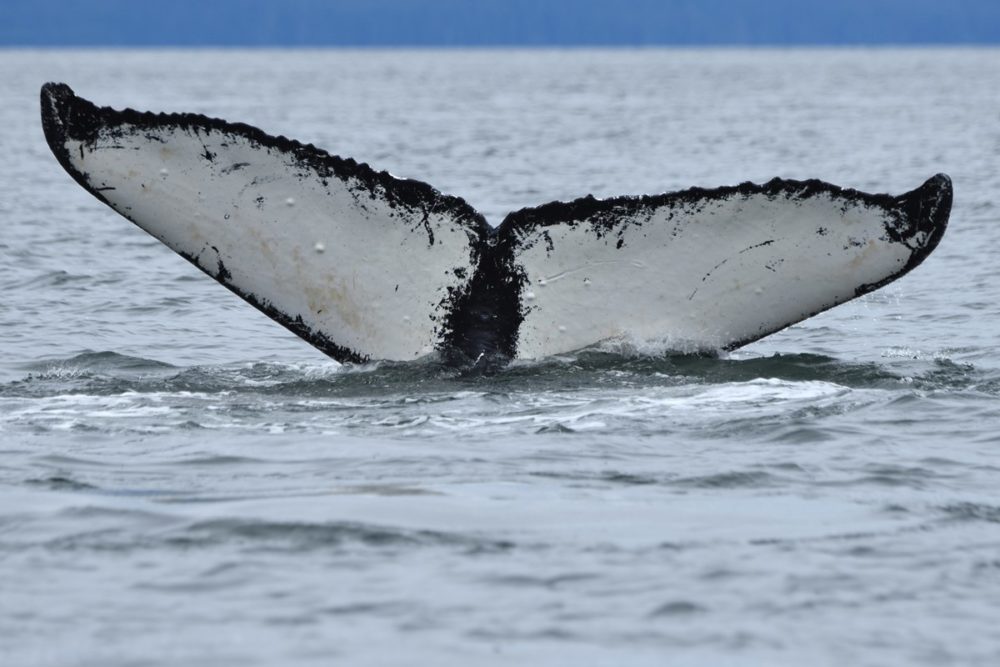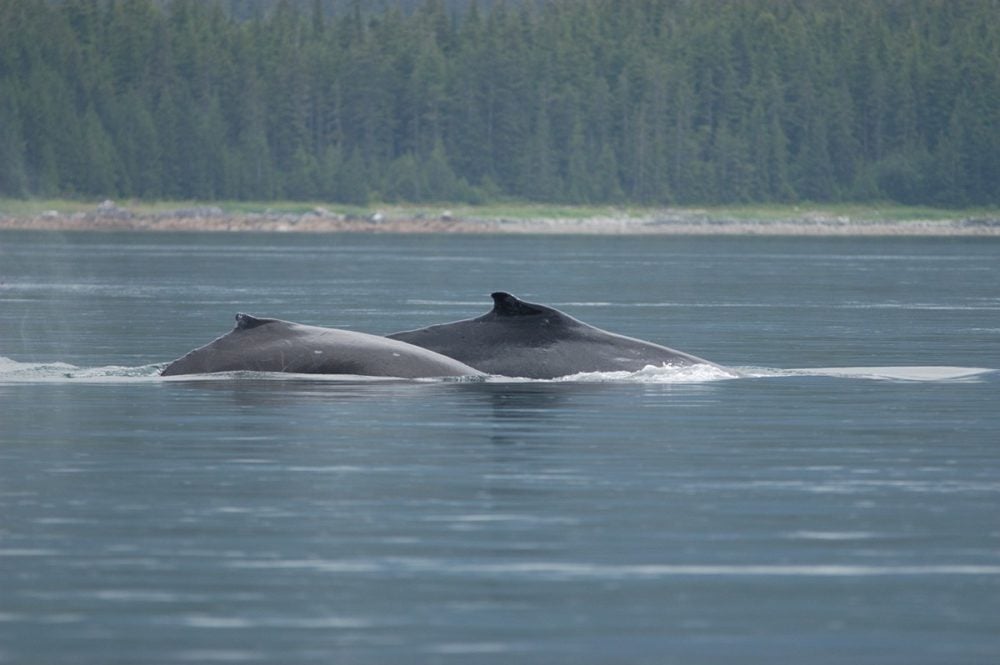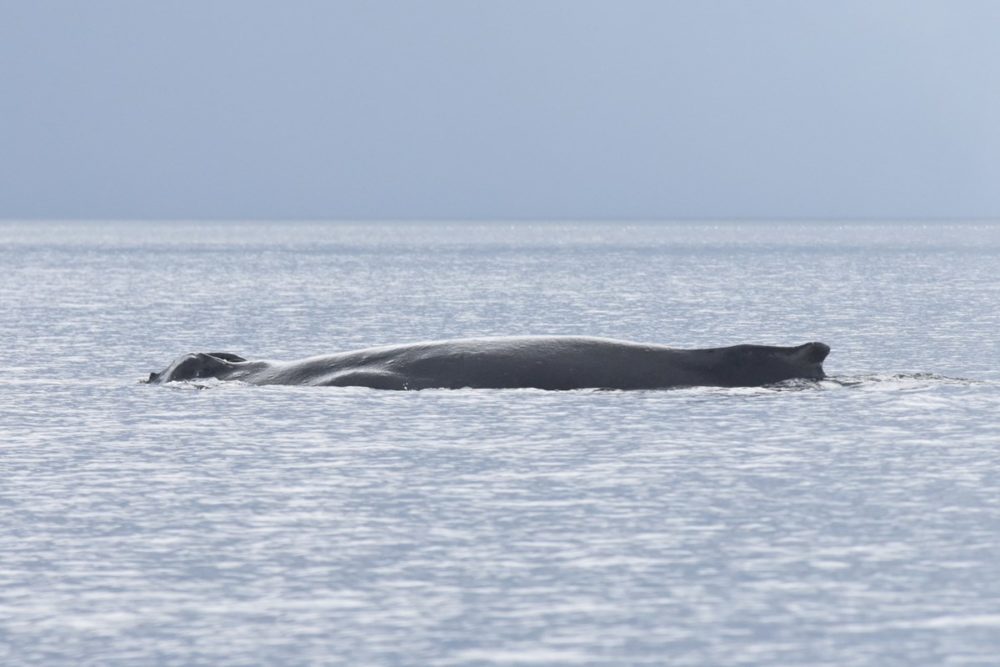This news story about Glacier Bay National Park’s humpback whale population decline is based on a March 14, 2022, National Park Service press release. You can read the original release here.
A new study concludes that the humpback whale population in Southeast Alaska waters was disrupted by the massive and intense 2014-2016 Northeast Pacific marine heatwave (PMH) with lingering effects on the marine food-web.
The study documents trends in the survival and reproduction of over 700 humpback whales in and around Glacier Bay National Park over a 36-year period that included the years of the PMH.
The results are striking, revealing profound impacts from the marine heatwave.

Northeast Pacific Marine Heatwave Results in Decline in Glacier Bay Humpback Whale Population
North Pacific humpback whales migrate thousands of miles from tropical breeding areas off Hawaii and Mexico to rich feeding grounds in Alaska each year.
Using a technique known as “photo-identification” researchers can recognize individual whales by photographing the unique markings on their tail flukes.
National Park Service biologists have collected data on the humpback whale population in and around Glacier Bay every summer since 1985, making it one of the world’s longest studies of a whale population.
A shared whale fluke database maintained by Glacier Bay National Park and the University of Alaska Southeast allows biologists to track the return and behavior of individuals over time.

Whale sightings documented from 1985 to 2020 showed more than two decades of population growth that peaked in 2013.
Beginning in 2014 the marine heatwave caused sharp declines in abundance, survival and reproductive success of Glacier Bay humpback whales.
By 2018, less than half as many whales were present, a 56% decline in abundance compared to 2013. The study found that in general, abundance tended to decline two years after summers with unusually warm ocean temperatures.
Additionally, far fewer calves were born during and after the heatwave. From 1985-2013, there was typically 1 calf born for every 3 adult females. By contrast, during and after the PMH, only 1 calf was born for every 25 females.
The survival rates for calves and adults also plummeted. Calf survival dropped by more than a factor of ten (from 40% down to 3%) during and after the heatwave.
At the same time, adult survival declined from 98% to 89%, which is lower than any value previously reported for this long-lived species.

Long-Lasting Changes to the Marine Food Web
“What surprised us the most was how sudden and long-lasting the changes were. The effects on the whales have lasted far longer than the heatwave itself,” said National Park Service whale biologist Christine Gabriele, lead author on the study.
“It shows that even healthy populations are vulnerable to rapid changes in ocean conditions.”
While it is possible that the whales moved to other feeding areas, an international research collaboration using “Happywhale” (a web-based automated fluke-matching program) allows Gabriele and other researchers to track individual whales throughout the North Pacific.
Finding very few whales that moved to other areas, Gabriele and her colleagues conclude that if whales have relocated, they have moved to a place where fluke photo-identification is not occurring.
Unfortunately, whale mortality is a more likely explanation, especially in light of the growing body of research documenting seabird mass mortalities and fish population declines in Southeast Alaska, the Bering Sea and the Gulf of Alaska during and after the PMH.
It has been five years since the heatwave subsided and, luckily, there have been some hopeful signs recently.
Janet Neilson, co-principal researcher on Glacier Bay’s whale team, just finished writing a report summarizing the 2021 whale season and said, “In 2019, whale numbers started to climb, and in 2020 and 2021 we started to see more females with calves: equivalent to about 1 calf for every 14 whales.”
However, since 2016, many whales have appeared to be unusually thin, based on a lack of fat behind the blowholes, near the shoulder-blades or along the flanks.
Neilson added, “Almost all of the 11 mothers this year appeared thin, even at the end of the feeding season when they should have fattened up.”
Overall, these results suggest that the PMH caused long-term changes in the marine food-web that are having lingering effects on the whales.

Ocean Warming Is One of Many Effects of Climate Change
Understanding the effects of ocean warming is increasingly important as marine heatwaves become more common and increase in severity as a result of climate change.
Long term oceanographic monitoring in Glacier Bay has shown that ocean temperatures are warming by 0.1°C per decade since 1993.
As whales and other marine life face growing threats to their habitat and food supply from a warming planet, protected marine areas like Glacier Bay National Park are increasingly important as a place where whales can feed relatively undisturbed.
Gabriele hopes that the Park Service continues the whale study in Glacier Bay for many years to come. “Long term studies like this one are rare but essential to understanding our changing oceans. Disruptions of the marine food-web ultimately affect humans as well as other animals.”
The results of the study are being published this week in the journal Mammalian Biology.
Co-authors on the study are National Park Service biologists Courtney Amundson and Janet Neilson, Janice Straley at the University of Alaska Southeast in Sitka, C. Scott Baker at Oregon State University’s Marine Mammal Institute, and Seth Danielson at the University of Alaska Fairbanks.
More information: Glacier Bay & Icy Strait Humpback Whale Population Monitoring 2021 Update
